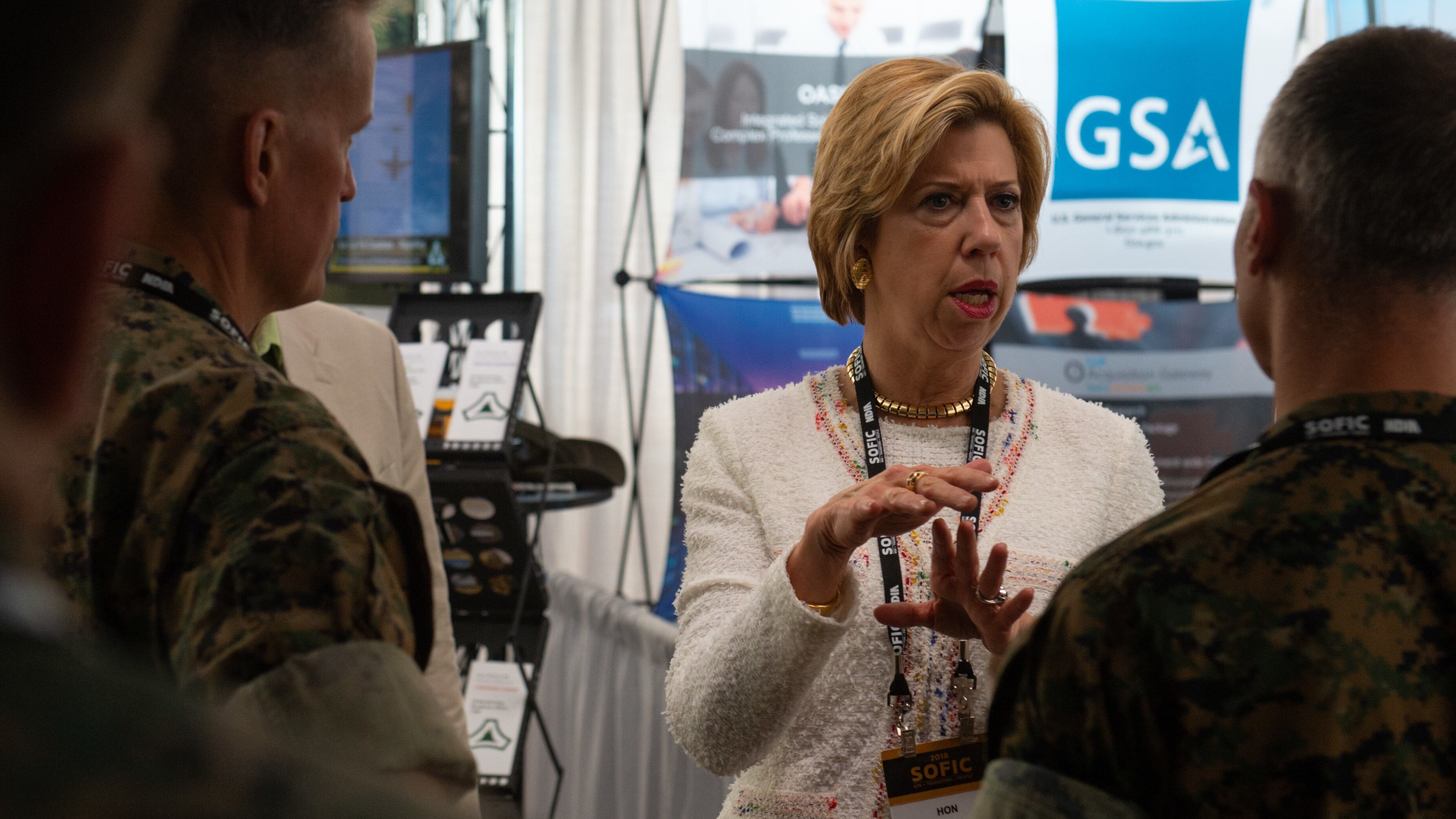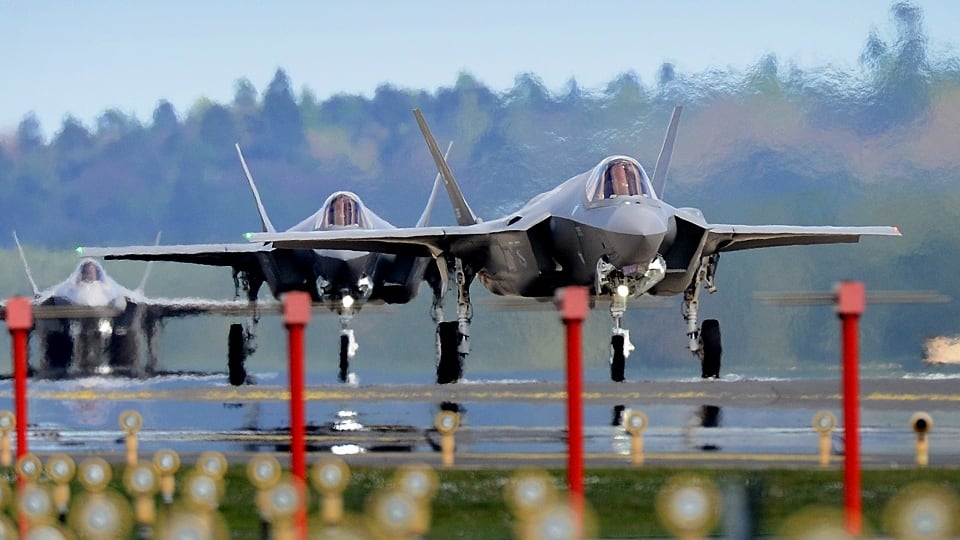WASHINGTON — Under the purview of Defense Secretary Jim Mattis, reform has become a buzzword inside the Department of Defense, with every office trying to find ways to be more efficient, whether through cost savings or changes to bureaucracy.
The department’s Acquisition and Sustainment office, headed by Ellen Lord, manages billions of dollars in materiel; and by Lord’s own belief, it is ripe for changes that could net the department big savings.
On Dec. 17, Lord sat down with reporters and outlined a series of goals for 2019 that she hopes will help transform how the Pentagon buys equipment. Here, then, are six key items to watch for in the coming year.
1. Rework the department’s key acquisition rules: The DoD Instruction 5000.02 is a key bedrock that forms the basis of how the defense acquisition system works, guiding acquisition professionals in their day-to-day program execution. And if Lord gets her way, she’ll largely rip it up and start over.
“In 2019, one of my key objectives is to rewrite 5000.02. We have, right now, this huge, complicated acquisition process that we encourage our acquisition professionals to tailor to their needs,” Lord said. “We are going to invert that approach and take a clean sheet of paper and write the absolute bare minimum to be compliant in 5000.02, and encourage program managers and contracting officers to add to that as they need for specific programs.”
Lord envisions taking the massive, unwieldy 5000.02 guidance and getting it down to “a couple page outline of what you need to do,” with “simple” contract language and an easy-to-follow checklist “so that this isn’t an onerous process.”
“I’m encouraging what I call creative compliance. I want everyone to be compliant, but I want people to be very thoughtful and only use what they need,” she said. “This is literally starting with a clean sheet of paper, looking at the law and the intent, and working to vastly simplify this.”
RELATED

Andrew Hunter, a former Pentagon acquisition official now with the Center for International and Strategic Studies, notes that the instruction is supposed to be rewritten every five years to keep it fresh, and now is probably the right time to start looking into that.
But, he added, “a lot of what she says she wants to do are things that sound very similar to my ear to what [Lord’s predecessor] Frank Kendall was trying to do in the last rewrite. He tossed stuff out left and right, worked very hard to create the different models, put in extended discussions of different potential models of programs so that it would be obvious to people there’s not one single way to do a program.”
Hunter is cautious when it comes to a massive shift in the 5000.02 system. “If you literally tell the system, ‘All the rules are repealed, go do everything you want,’ the reaction won’t be a sudden flood of creativity that astounds you with the amazing talent at the department, even though there is a lot of talent there," he said.
“What’s more likely to happen is you have total paralysis because everyone is sitting around going: ‘Oh no, the rules are gone. How do we know what we can do? What do we do now?' But over time that might shake out.”
If Congress needs to get involved, Lord said, she’s prepared to go to Capitol Hill “because I know they are partnering with us and they want to make sure we do things in a simpler, most cost-effective manner.”
2. Intellectual property rules: A long-standing fight between the department and industry is over who should own the intellectual property used by the American military. Before fully taking on 5000.02, Lord hopes to write a departmentwide intellectual property policy.
Lord pointed to the “very good job” done by the Army on creating an IP policy and said her goal is to build on that to create a standard across the DoD.
“From an industry perspective, we are trying to be consistent across all the services and agencies, so that we don’t have different requirements for similar needs,” Lord said. “So intellectual property is a good example. We’d like to have the same kind of contract language that can be tailored to individual needs, but basically have consistent language.”
David Berteau, a former Pentagon official who is now the president and CEO of the Professional Services Council, noted it is hard to read the tea leaves for what Lord may be planning based on her public comments.
But he pointed out the long-standing challenge for the Pentagon — that nearly 70 percent of all program costs are life-cycle sustainment and maintenance costs — as a sign that something needs to change so the department can avoid major issues in the future.
Depending on how new rules are implemented, the use of IP might drive down costs — or, he warned, it might lead to companies unable to compete, forcing the Pentagon to pay more or be less prepared for challenges. Put plainly, Berteau said, “it’s complicated.”
He hopes Lord will begin interacting with industry on this issue in ways similar to the current “listening tour” on changes to progress payments.
RELATED

3. Better software development: It’s become almost cliché that the department needs to do better at developing software, but in this case it’s a cliché that experts, including Lord, agree with.
The Defense Innovation Board, a group of tech experts from outside the department, is working on a series of studies on software, including one focused on how to drive agile development techniques inside the building. Lord said to expect that report before the end of March, adding: “I think that will be important in terms of capturing a road map forward on how to do this correctly.”
4. Increase use of OTAs: In 2018, Lord’s office released a handbook on when and how to use other transaction authorities — legal standards designed to speed acquisition that critics say are underutilized by the department. Lord called it “sort of a warmup” for creating more useful handbooks for the acquisition community, but said that the goal for 2019 is to get people to correctly employ OTAs.
“Usually they should be used when you don’t have a clear requirement. So, true prototyping when you don’t know what you’re going to get,” Lord said. “Prototyping early on, probably before you get to the middle-tier acquisition.”
5. Greater use of prototyping: Speaking of which, Lord said the department has about 10 projects underway for rapid prototyping at the mid-tier level, with the goal of growing to about 50 in the next year. The goal is to take the systems into the field, test them out and then grow the next iteration of the capability based on what is learned.
“We’re taking systems that are commercially available and perhaps need a little modification, or defense systems that need a modicum of modification to make them appropriate for the war fighter,” Lord said. “That’s one of the authorities we are very appreciative for, and we will continue to refine the policy. I signed out very broad policy on that this year. We’ll write the detailed policy coming up early next year.”
6. Making the Selected Acquisition Reports public again: Until recently, the department publicly released annual Selected Acquisition Reports for each of the major defense programs. Those reports can inform the public of where programs stand and the costs associated.
However, under the Trump administration, those reports have been largely classified as “For Official Use Only,” or FOUO, a higher level of security. Critics, including incoming House Armed Services Committee Chairman Adam Smith, D-Wash., have argued there is no need for those once-public reports to be listed as FOUO. It appears Lord is working to open those back up.
“We’re going to try to minimize the FOUO on that,” Lord said in response to a question about it. “There are certain information [issues] that we have to protect, but [we] understand the need, the requirement, and I will put our guidance to make everything open to the public to the degree we can.”
Aaron Mehta was deputy editor and senior Pentagon correspondent for Defense News, covering policy, strategy and acquisition at the highest levels of the Defense Department and its international partners.







